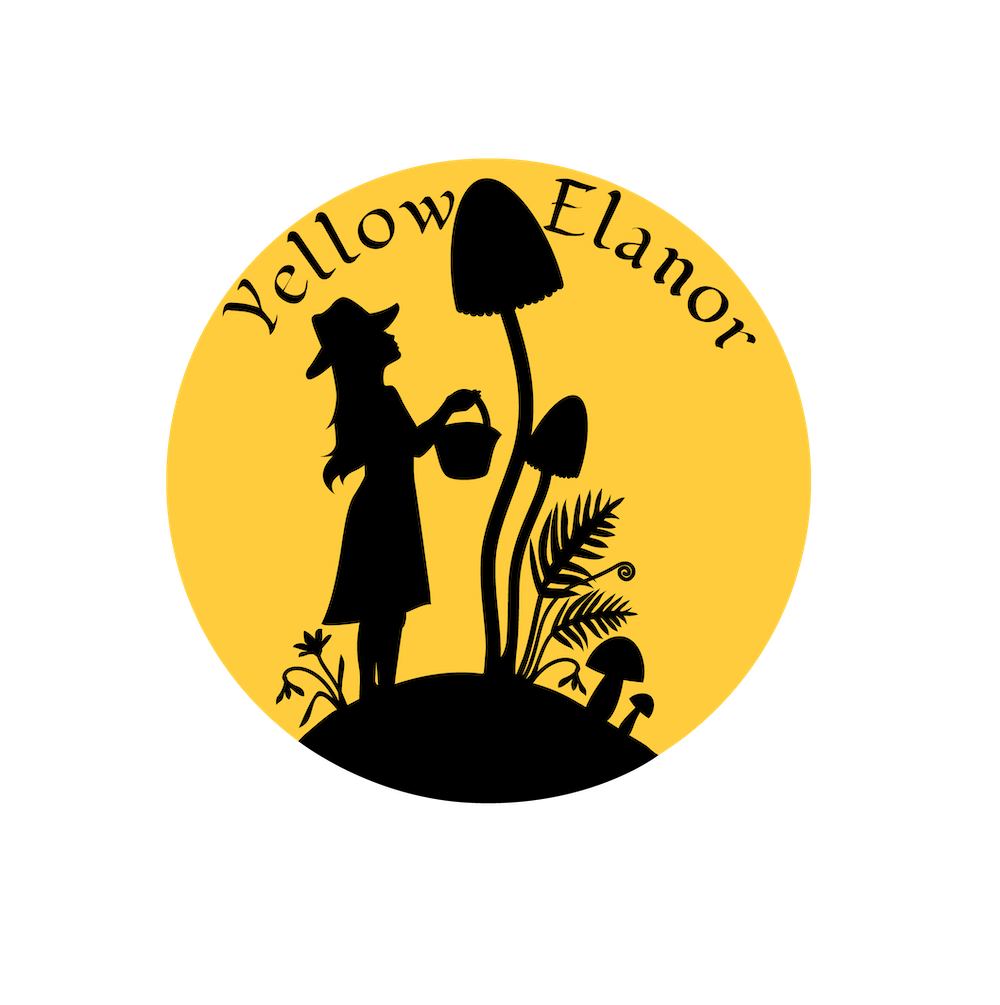Strikingly beautiful, powerfully medicinal, deliciously edible (with no poisonous look-a-likes) and you can even grow it yourself, Hericium mushrooms deserve accolades of all kinds.
You can find these mushrooms cascading down trees like waterfalls. Sometimes growing quite high up making it a challenge for the forager, but when you’re lucky, you’ll find them growing on recently fallen logs, at perfect foraging level.
There are many species of Hericium, all edible and similar in stature. The taxonomy (scientific naming/classification) of Hericium species’ is not quite settled (as with most mushrooms). It’s suggested that many of the currently named individual species are actually one in the same, just growing slightly different because of habitat and environmental factors.
The well known and most researched Lion’s Mane (Hericium erinaceus), grows in my area, though infrequent. The photos you see are all of the H. abietis species, sometimes called Bear’s Head to differentiate.
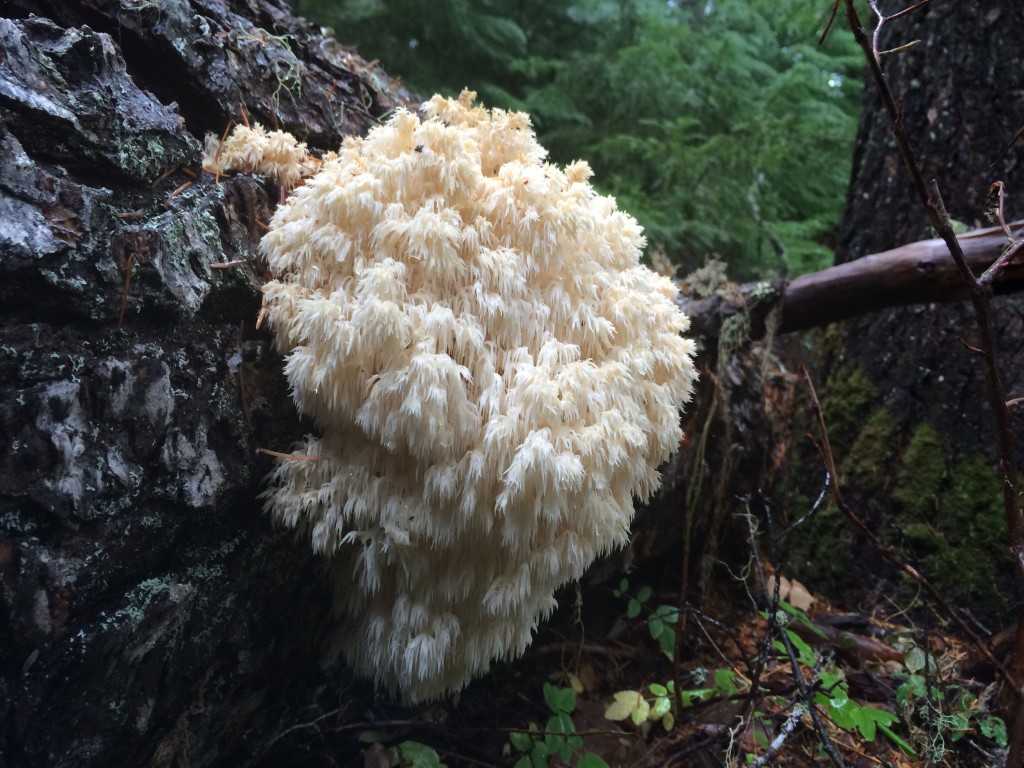 Medicinal Uses:
Medicinal Uses:
Mushrooms like Hericium get me excited when I consider their potential medicinal impact. Current research is looking into Hericium for specific polysaccharides that have shown strong ant-tumor properties–which did you know, that numerous mushrooms have promising results in anti-tumor properties, various mushrooms impacting different types of cancer. However, to me the most fascinating research (and results) with medicinal mushrooms are Hericium’s role as a nerve growth factor stimulater. Extracts from the mushroom contain what is called ‘erinacines’-this stimulates rehabilitation and new growth in neurons. The impact of this is both mental and physical. There is potential for whole new avenues to address neurological rehabilitation and trauma such as in forms of dementia and nerve degeneration diseases (Alzheimer’s, Parkinson’s, Huntington’s disease…etc). I eagerly awate more research for all the possible positive advances in this area of the medical field.
Identifying Hericium: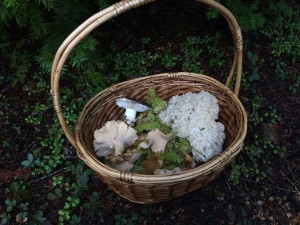
Hericium have a thick white stalk that strongly attaches to their host tree or log. From this stalk fall long white spines. The Bear’s Head will have multiple branches forming from the stalk, each branch decorated with icicle like spines. Lion’s Mane does not branch, but the spines grow more compact from the stem and give the mushroom a more ‘pom-pom’ look (which it is often referred to as). The spines are soft, but not completely flexible, they will break if bent too far. With age the mushroom will turn from white to yellow.
Specimens can range from the size of your fist or be as broad and wide as your shoulders, weighing many pounds each.
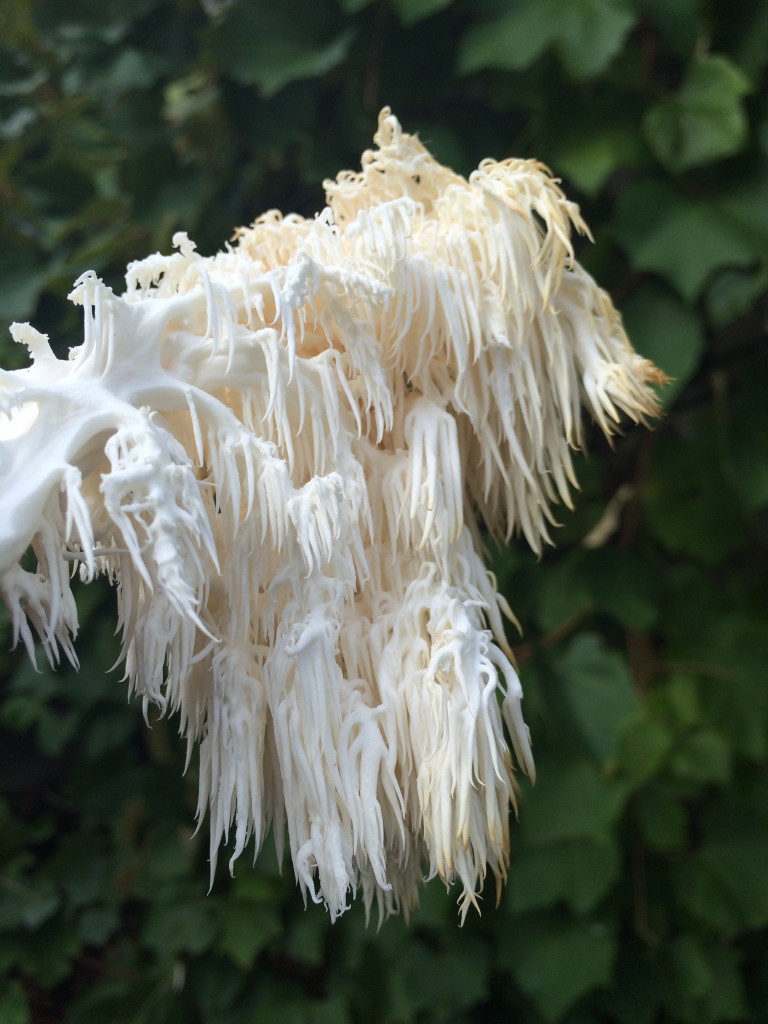
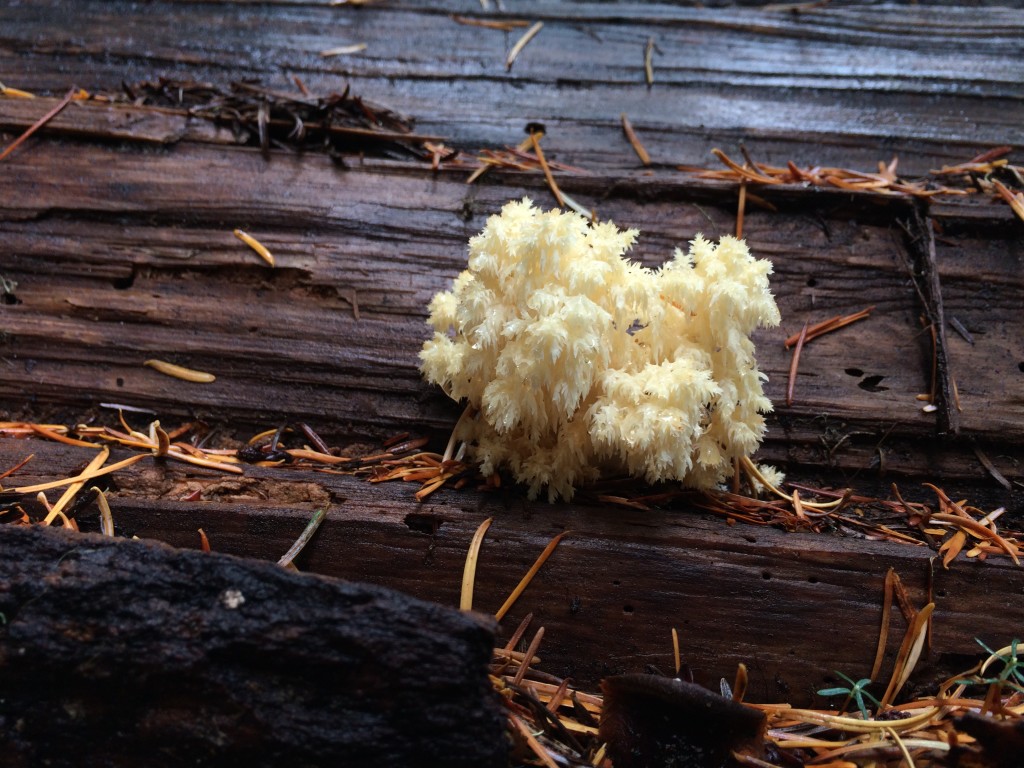
This specimen is about half the size of my hand.
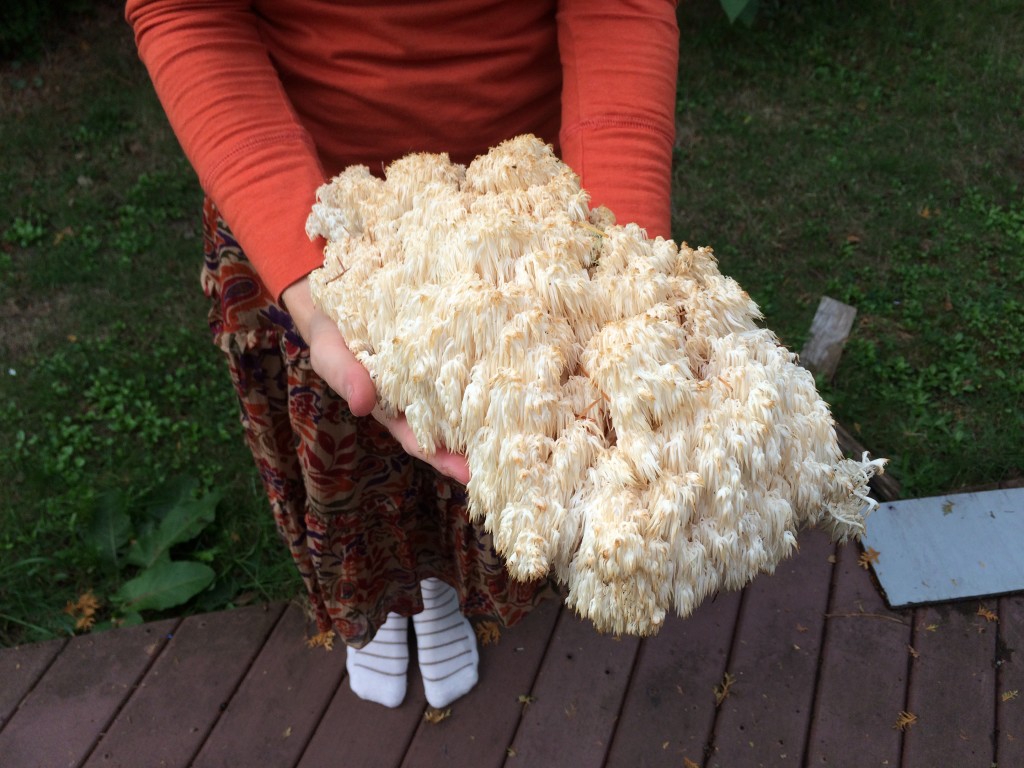
This one weighed several pounds, but Bear’s Head can potentially grow much, much larger.
Look-A-Likes?
There are no poisonous look-a-likes to the Hericium species. There really isn’t anything (poisonous or otherwise) that looks like these spectacular mushrooms, but be sure to always read a field guide description when you find a specimen-especially your first time (after you’re done doing a happy dance).
Where to look: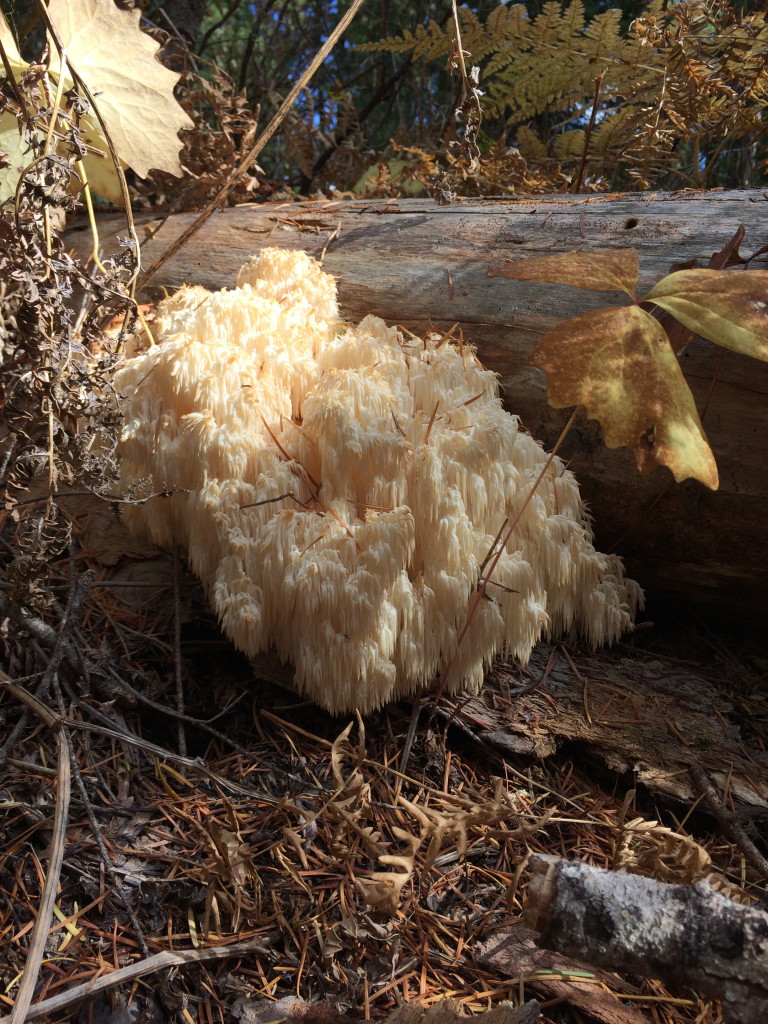
Growing on trees or recently fallen logs. Sometimes close to the ground, sometimes much higher than eye level on trees, so keep an eye out!
In the Pacific North West where the Bear’s Head grows (H. abietis), you will find them on conifer trees (especially Douglas Fir).
In other areas of the world, where other varying species of Hericium grow, you will find them on hardwood trees.
If you find one, be sure to thoroughly search the nearby area (even the same tree/log) you found it on, they tend to cluster. In addition, make a point to remember where you found your mushroom, they are likely to come back consecutive years in the same exact location.
The fall season is most common for finding them, however they can show up other seasons if conditions are right.
Cleaning:
Most Hericium won’t be very dirty (that is, if you don’t drop it after cutting it down), but they can have lots of little bugs in-between the spines. Cut or pull apart the mushroom in to smaller, more manageable sizes, gently wash with lightly running water.
Cooking:
Sautéed or baked until they start to turn golden brown. They are often compared to crab meat and can be used as a seafood substitute in many recipes. My personal favorite way to enjoy is simply sauté (medium to medium/high heat) or bake in the oven until browned and slightly caramelized-adding butter halfway through the process, sometimes adding a dash of garlic and enjoy as is. This mushroom is so incredibly delicious that my mom, who has spent her entire life despising the consumption of mushrooms-enjoyed eating it and my 2 year old nephew came back for seconds!
Storage
Short term storage: In a brown paper bag in the refrigerator.
Long term storage: Cooking then freezing or drying and rehydrating in a milk bath when ready to use.
I’ll be honest with you, I have never had to preserve this mushroom long term, it’s always gone before I know it!
